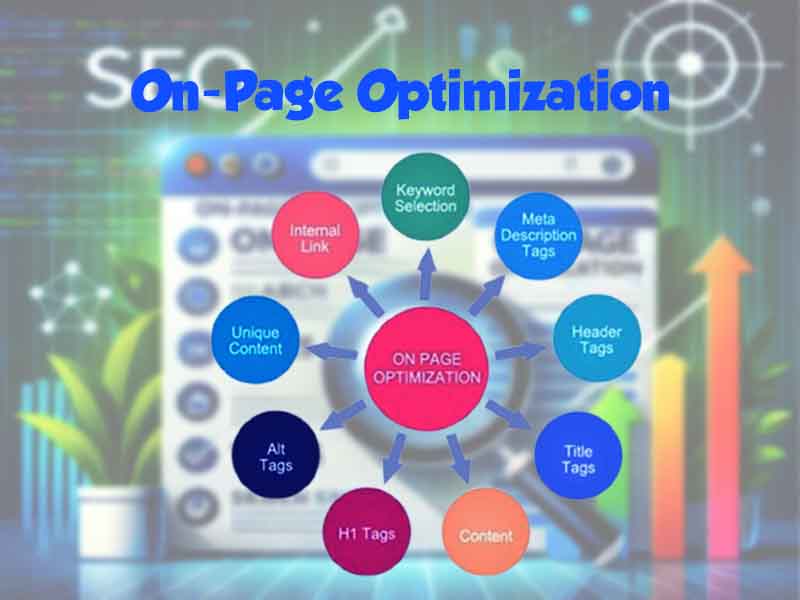On-Page SEO Best Practices: How to Optimize Your Website Like a Pro
In the fast-paced digital world, your website is often the first impression your business makes. On-page SEO is the cornerstone of ensuring your site not only ranks well on search engines but also engages visitors effectively. This comprehensive guide will walk you through the essentials of On-Page SEO, giving you practical tips to optimize your website and deliver real value to your audience.What is On-Page SEO?
On-page SEO is connected to refining individual pages on your website to improve their visibility in search engine results and attract highly relevant visitors. This includes refining your content, HTML structure, and technical elements to align with what both users and search engines expect.Why Does On-Page SEO Matter?
Search engines, like Google, aim to provide users with the most relevant and valuable content. By implementing On-Page SEO practices, you ensure your website:- Meets the search intent of your audience.
- Delivers a seamless, user-friendly experience.
- Builds credibility and authority in your niche.
Key Components of On-Page SEO
1. High-Quality Content
Content is the foundation of on-page SEO. Creating valuable, well-researched, and engaging content is non-negotiable.- Focus on Keywords: Identify terms your audience frequently searches for and incorporate them naturally.
- Answer Intent: Address questions and solve problems your target audience has.
- Comprehensive Coverage: Don’t just skim the surface—go in-depth while staying clear and concise.
- Engage the Reader: Use storytelling, examples, and a conversational tone to keep readers hooked.
2. Optimized Meta Tags
Meta tags serve as your content’s first introduction to search engines and users. Optimize them to make a strong and lasting first impression.- Title tag: Include your top primary keyword and keep it under 60 characters
- Meta Description: Write a compelling summary (150-160 characters) that entices clicks.
- Header Tags (H1, H2, H3): Organize your content logically with keywords in headings where relevant.
3. SEO-Friendly URLs
A clean, descriptive URL enhances both usability and search engine ranking.- Keep It Short: Avoid long, convoluted URLs.
- Keyword Inclusion: Include your primary keyword to signal relevance.
- Avoid Special Characters: Stick to standard text to keep URLs user-friendly.
4. Internal Linking
Internal links create pathways for both users and search engines to explore your site more effectively.- Add Context: Link to related pages that provide additional value.
- Use Descriptive Text: Avoid generic phrases like “click here” and opt for meaningful anchor text.
5. Image Optimization
Images play a significant role in enhancing user experience but can also impact site speed.- File Size: Compress images to improve load times without sacrificing quality.
- Alt Text: Describe your images with relevant keywords to boost accessibility and SEO.
- File Names: Use descriptive names instead of default filenames (e.g., “blue-widgets.jpg” vs. “IMG1234.jpg”).
6. Mobile-Friendliness
With mobile devices accounting for most of the web traffic, responsive design is essential.- Responsive layout: Make sure your site adapts perfectly to any screen size.
- Readable Fonts: Use font sizes and styles that are easily read on smaller screens.
- Touch-Friendly Elements: Design buttons and links to be easily clickable on mobile devices.
7. Page Speed Optimization
A slow website frustrates users and negatively impacts search rankings. Speed up your site by:- Minimizing Code: Reduce unnecessary CSS, JavaScript, and HTML.
- Using Caching: Enable browser caching to store commonly used resources.
- Content Delivery Network (CDN): Use a CDN to deliver content faster to global audiences.
Best Practices for On-Page SEO
- Keyword Placement: Naturally integrate keywords, meta tags, and headers into your content.
- Engagement features: Include comments sections, sharing options, and interactive elements.
- Schema Markup: Use structured data to help search engines better understand your content.
- Consistency: Regularly update your content to keep it relevant and accurate.
Tools to Enhance Your On-Page SEO Efforts
- Google Analytics: Monitor traffic and user behavior.
- Google Search Console: Identify and fix indexing issues.
- Yoast SEO or Rank Math: Simplify and optimize tasks.
- PageSpeed Insights: Test and improve your site’s loading speed.
- SEMrush or Ahrefs: Conduct keyword research and competitor analysis.
How On-Page SEO Drives Results
Effective On-Page SEO ensures your website is primed for success by:- Boosting Organic Traffic: Higher rankings mean more visibility and clicks.
- Improving User Engagement: Optimized content keeps visitors on your site longer.
- Enhancing Credibility: A well-structured, informative site builds trust with users and search engines.


